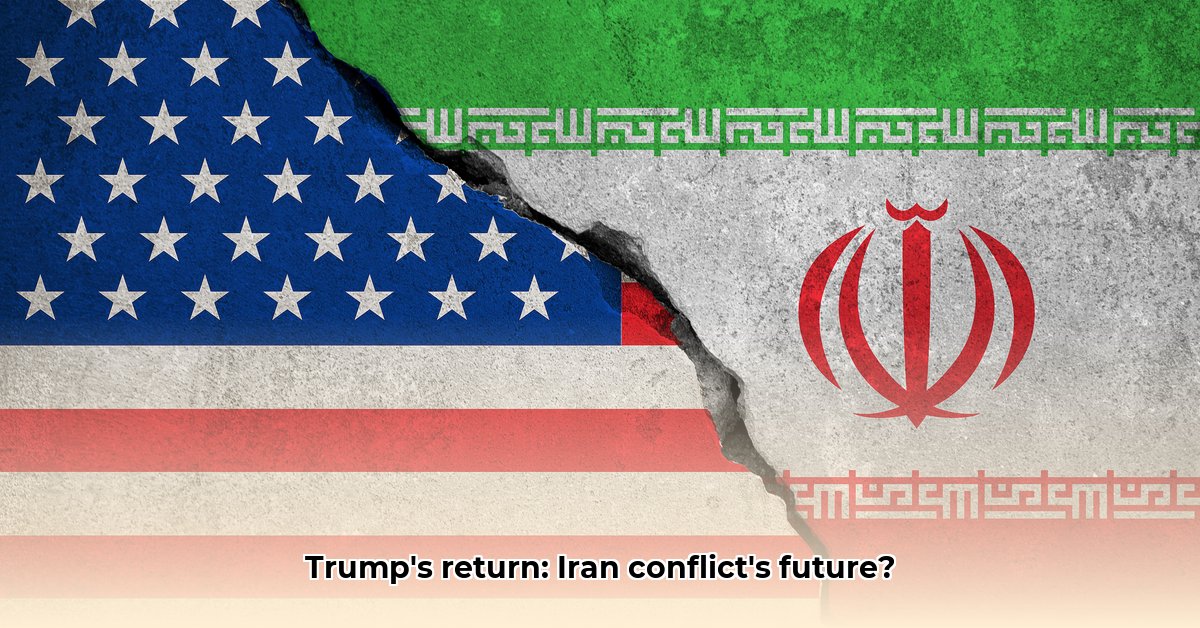
The Complexities of US-Iran Relations in a Post-2024 World
The relationship between the United States and Iran remains deeply complex and fraught with tension. Understanding potential pathways to conflict resolution requires a nuanced analysis, considering historical precedents, ongoing regional dynamics, and the potential impact of a Donald Trump presidency in 2025. Significant uncertainties exist, particularly regarding Trump's potential policies towards Iran, making accurate prediction difficult. However, by examining key factors and stakeholder interests, we can identify potential avenues for de-escalation and negotiation. For more on potential military conflict, see this analysis of a potential US-Iran War.
How might a Trump presidency in 2025 impact Iran-US relations? His previous "maximum pressure" campaign, marked by economic sanctions and withdrawal from the Joint Comprehensive Plan of Action (JCPOA), drastically impacted regional stability. A repeat of this approach, or a different strategy, carries immense implications for conflict resolution. The uncertainty itself is a critical factor, hindering effective prediction and proactive diplomacy.
A Decade of Diplomatic Setbacks and Heightened Tensions
The past decade has witnessed a series of diplomatic attempts, interspersed with escalating conflict. The JCPOA, initially conceived as a mechanism to limit Iran's nuclear program in exchange for sanctions relief, ultimately failed due to the US withdrawal. This demonstrates the fragility of international agreements and the persistent challenges in achieving lasting peace in the region. The numerous proxy conflicts throughout the Middle East further complicate an already tense geopolitical landscape.
What lessons can be learned from the failed JCPOA? The collapse highlights the crucial need for consistent commitment from all parties, robust verification mechanisms, and a shared understanding of long-term goals beyond short-term political advantages. The need for international legal frameworks for verification and enforcement cannot be overstated.
The 2023 Israel-Hamas War: A Watershed Moment?
The October 2023 conflict between Israel and Hamas significantly exacerbated regional tensions, adding another layer of complexity to US-Iran relations. The war's impact on potential conflict resolution remains unclear. Did it create an opening for renewed dialogue, or did it further entrench existing hostilities? The answer likely depends on how all stakeholders choose to react and the subsequent trajectory of geopolitical events.
How did the 2023 Israel-Hamas war influence the possibility of Iran-US reconciliation? The war's cascading effects on regional stability and its impact on the perceptions and priorities of key actors (including Iran, the US, and regional powers) will significantly determine whether it accelerates or obstructs conflict resolution efforts.
Stakeholder Analysis: Diverging Interests and Competing Priorities
Multiple actors hold significant influence over the trajectory of US-Iran relations, each with distinct short-term and long-term goals. Their often disparate objectives hinder the creation of a unified path toward peace.
| Stakeholder | Short-Term Goals (Next Year or So) | Long-Term Goals (The Next Few Years) |
|---|---|---|
| US Government | Reduce regional tensions, strengthen alliances, cautiously explore diplomacy | Comprehensive agreement addressing Iran's nuclear program and regional conduct |
| Iranian Government | Manage economic difficulties, evaluate new negotiation offers | Balance regional ambitions with international pressure and sanctions |
| Regional Actors (e.g., Israel, Saudi Arabia) | Maintain security, pursue regional political objectives | Work towards confidence-building measures, seek conflict resolution frameworks |
| International Community | Maintain pressure for compliance with international norms, support diplomacy | Prevent future conflicts, promote regional development and cooperation |
The Role of International Law and Institutions
International law, embodied in UN Security Council resolutions and IAEA inspections, provides a theoretical framework for regulating state behavior. However, this framework is often undermined by national interests and regional power dynamics. Even the effectiveness of international pressure is a subject of ongoing debate, emphasizing the difficulty of achieving true global consensus on conflict resolution.
How effectively can international legal frameworks address the complex challenges of Iran-US relations? The success of these mechanisms depends on the willingness of all actors to comply, the robustness of verification and enforcement mechanisms, and the extent to which international pressure aligns with the interests of key stakeholders such as Iran and the US.
The Changing Nature of Warfare: New Challenges for Conflict Resolution
The increasing use of drones and other asymmetric warfare tactics necessitates a reassessment of traditional conflict resolution strategies. The fluid nature of modern conflict requires innovative methods, beyond conventional diplomacy, to mitigate escalating tensions and secure lasting peace.
The Path to Resolution: A Long and Uncertain Journey
Achieving a lasting resolution to the Iran-US conflict demands a multifaceted approach. Open communication, regional stabilization initiatives, and a willingness to compromise are prerequisites for progress. The coming years are crucial in determining the possibility of lasting peace in the region. The path forward remains uncertain, demanding patience, creative diplomacy, and a collaborative effort to bridge existing divides. The complex interplay of political, economic, and security concerns demands a pragmatic resolution based on international norms and mutual understanding rather than nationalistic pursuits. Future events and ongoing research will continue to shed light on the intricacies of this multifaceted problem.